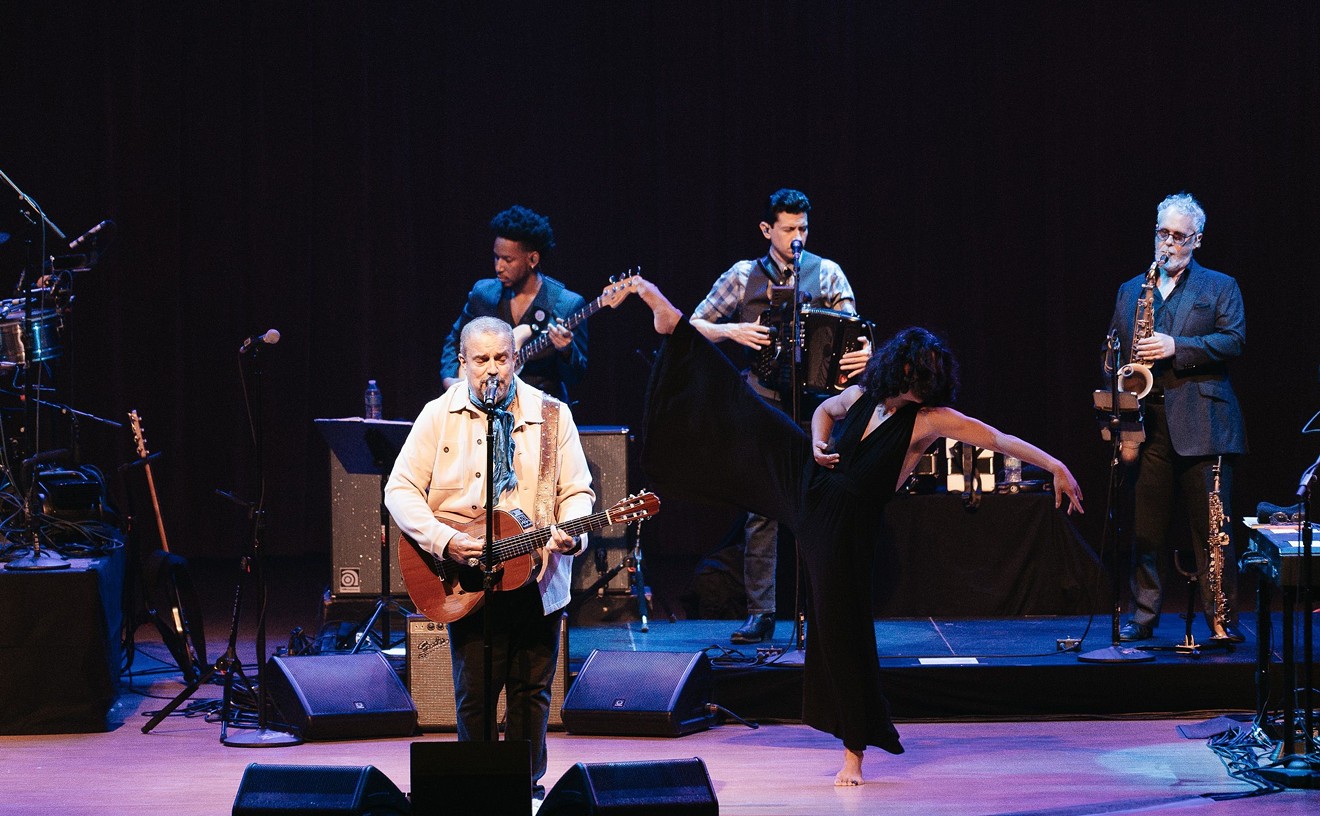Return of the Headhunters!
(Verve)
Herbie Hancock turned the jazz world on its ear in 1973 when he recorded Headhunters, an album that combined jazz and funk with the then-outlandish sounds of the synthesizer, an instrument with which Hancock had never before recorded. Headhunters became the best-selling jazz album to date and helped popularize a new genre -- fusion -- four years after Miles Davis had pushed jazz beyond its traditional boundaries by throwing rock and funk into the mix on his 1969 release Bitches Brew.
Headhunters set Hancock's career on a new trajectory and helped launch an era of musical experimentation. At first glance, a follow-up album 25 years later seems like a tired industry routine: squeezing a few extra dollars out of an old standby. But Return of the Headhunters! is a little different. This time Hancock isn't in the foreground at all but instead appears as a guest on three of the CD's ten tracks. Also, Hancock reunited the band he used on Headhunters -- something he'd considered doing for years -- to record on his own label, the newly formed Hancock Records, an imprint of Verve. With Bennie Maupin (saxophone), Bill Summers (percussion), Paul Jackson (bass) and Hancock (keyboards), the Headhunters comprise four of the five musicians from the original lineup. (The drummer Harvey Mason isn't on the CD.)
Not surprisingly, the Headhunters bring back many of the sounds that distinguished the first album while adding modern touches: sassy vocals, the cracking bell tones of Jackson's bass slapping, and the more sophisticated whooshing and whirling sounds of souped-up '90s synthesizers. The opening track, "Funk Hunter," starts with a bass riff not unlike that of "Chameleon," an old chestnut from Headhunters. The song settles into a groove, with Ray Parker, Jr.-like guitar screeching on the off-beats and Hancock's keyboard cutting its own rhythm, sounding like an electric harpsichord.
On "Skank It," the Headhunter's pay homage to the first album; the reedy "beer bottle" sound made by Summers on the great "Watermelon Man" is handily recycled here. And "Watch Your Back" begins with a short rap that describes the band's history and the first Headhunters album as "the love child of funk and jazz," citing Sly Stone and Earth, Wind & Fire as influences. But, with the swagger of a gangsta rapper, Trevant Hardson, one of the CD's nine guest musicians, makes it known that "the new team" is here.
As the inaugural recording for Hancock's new label, Return of The Headhunters! is decent jazz-funk tinged with soul and rap vocals. It has an artificial studio sparkle unlike its forebear, and the playing isn't nearly as vigorous. Then again, a new, unusual style of music isn't being forged.
-- Daniel Lovering
Calexico
The Black Light
(Quarterstick)
Joey Burns and John Convertino of Tuscon, Arizona, are the rhythm section for the legendary and mostly unheard-of Giant Sand. They've also backed Barbara Manning, Victoria Williams, Buffalo Tom's Bill Janovitz, and Richard Buckner, among others. Given that they've primarily worked with singer-songwriters, the mostly instrumental music on their second album as the duo Calexico seems to be a bit of a departure. But because they've been responsible for holding together the back end for others, they're able to open up their own songs while keeping everything from flying apart.
With measured restraint Calexico sketches out an overall vibe, filling in each song with as few details as it takes to complete the picture. These expansive songs create a mood and ambiance of a long, slow journey, with a definite Southwestern feel.
Exploring the textures of accordion, trumpet, cello, mandolin, vibraphone, and strings while moseying across 17 tracks, The Black Light is background music that fades in and out of the foreground like a dream. Spaghetti Western soundtracks, mariachi meditations, Latin jazz, and Eastern European-flavored folk songs ride next to a handful of minimalist tracks with barely visible vocals. When the first words are uttered, they come as a surprise, almost ten minutes into the record. The tracks with vocals are more structured and less wandering, creating dark islands of narrative.
When the sun goes down, the desert becomes a different place, the hot calmness giving way to a spooky quiet. This is the desert Calexico seems most interested in exploring. Whether it's stuttering through the dark with tremoloed surf-guitar counterpointed by mariachi trumpets and hovering keyboards on "Frontera," or watching someone die in the slow-heartbeat lament "Bloodflow" -- which suggests Nick Cave, Slint, and Hallowed Ground-era Violent Femmes -- Calexico isn't afraid to confront the black night.
But like one of the multiple meanings suggested in the record's title, things from the dark may lead the way to something better. That may be the lesson the duo is trying to teach here, or it just may be trying to make good late-night music to drive to. Either way, The Black Light is haunting, uneasy listening.
-- David Simutis










